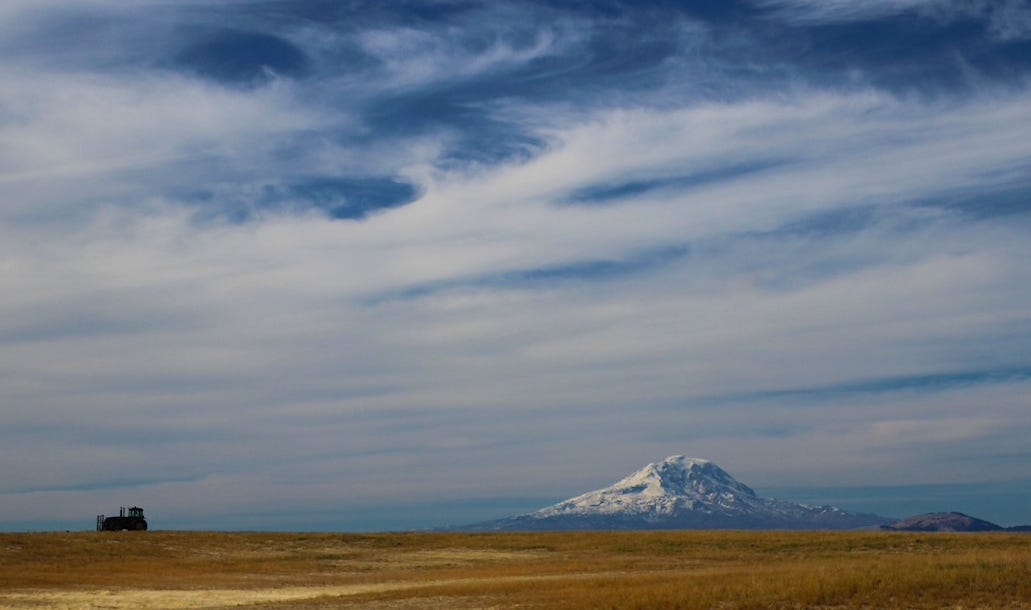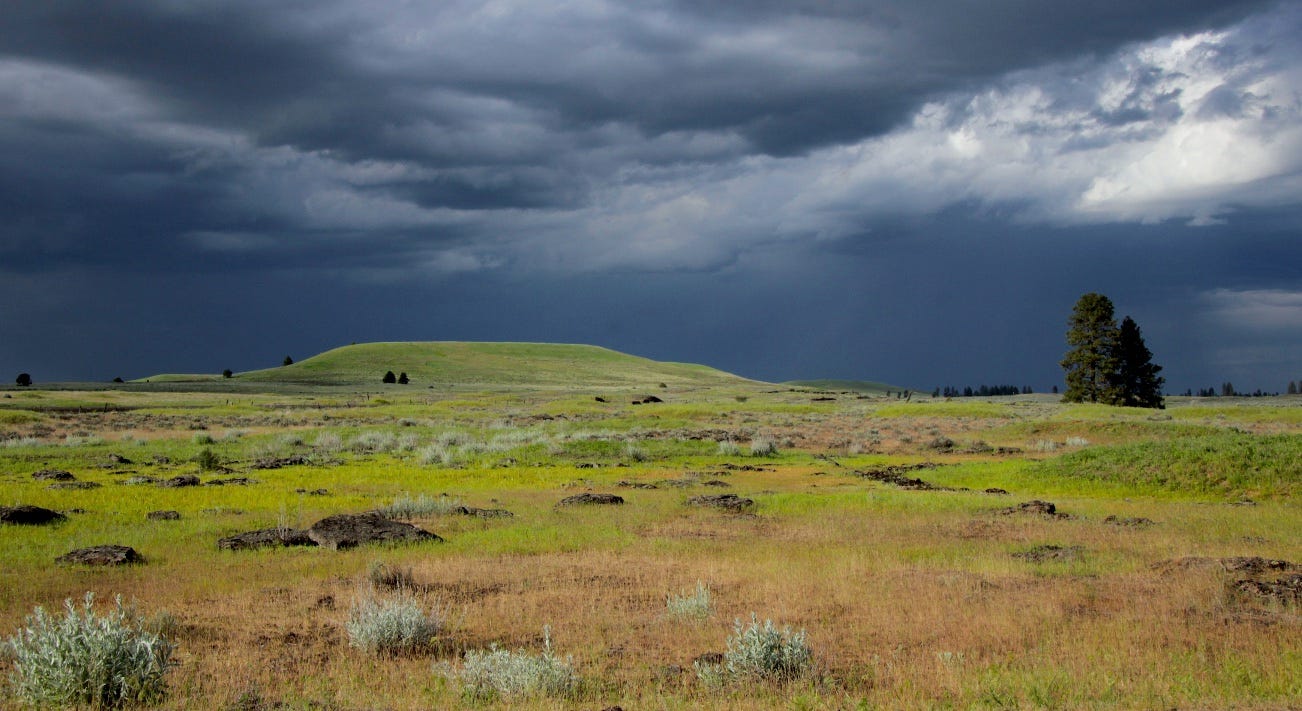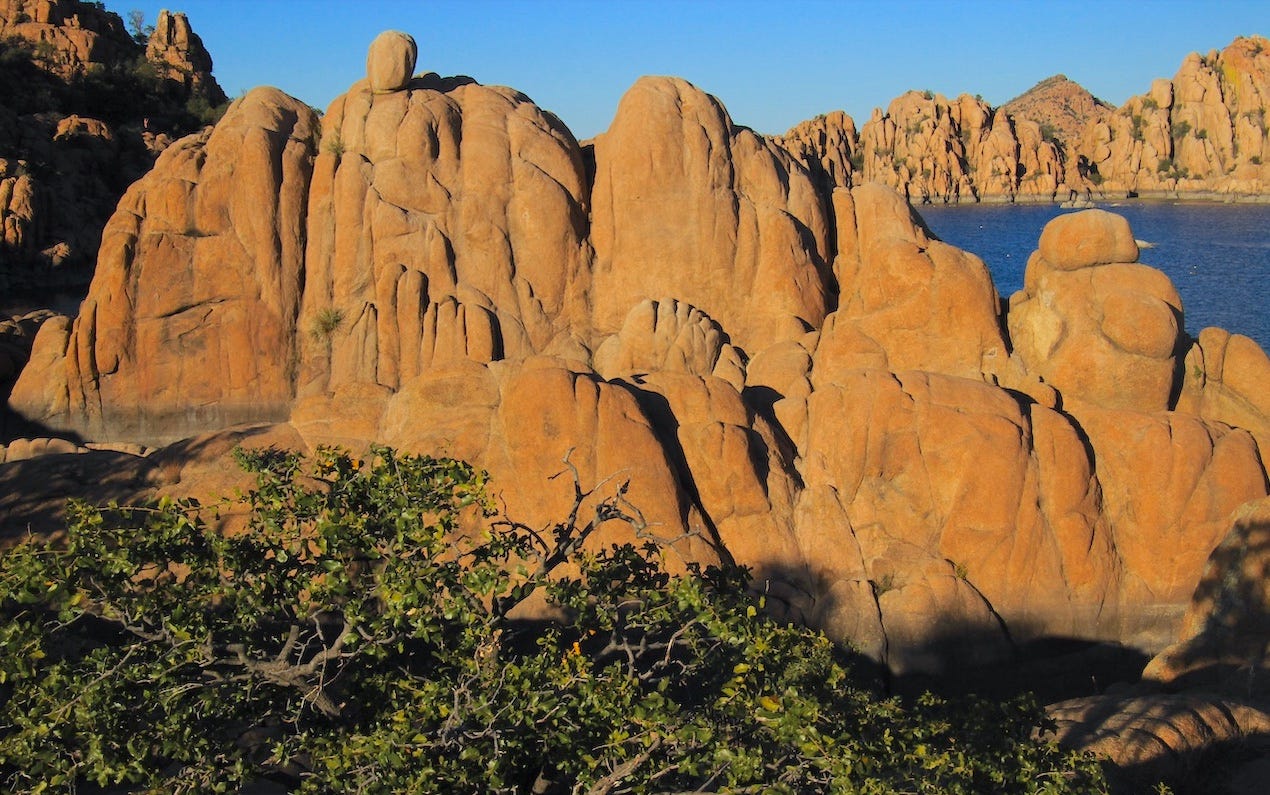The Daisy River—blanket of wildflowers in the eastern Palouse, with Idaho’s St. Joe mountains in the distance
Images and imaginations, beyond horizons
It’s been a month, to the day, since I gamely smiled at a busy but reassuring nurse just before the anesthesia took hold, on the way to having a mostly-new knee installed. I’m not allowed to drive, yet, but can now walk with a cane and even climb the 24 stairs up to my apartment. All by myself. But I so miss being out there—in nature, with or without a camera. I miss treks with hiking partners, most especially my son and daughter who help carry my equipment and do so much more to lift my spirits.
Consolations come in familiar and unexpected ways and here are some of the large-scale images—many from the sojourn for the Beautiful Wounds book—that I can share, without a prescription.
Mt. Adams, Washington’s eastern-most volcano, photographed near Goldendale on the way to Portland, with my daughter Audrey, for a book event at Powell’s
The light behind the storm—scablands in western Spokane County with a “Bretz hill” on the horizon. The ice age floods so inundated the Palouse that countless Palouse hills were swept away leaving loners, like this one, completely re-shaped, their downstream tails pointed toward the Pasco basin where floodwaters gathered in glacial Lake Lewis, west of Wallula Gap.
The Clark Fork delta photographed from Green Monarch Ridge, where a prolific ice dam blocked the river creating glacial Lake Missoula, with the Cabinet Mountains in the distance.
“As the Crow Flies”—A sage-wrapped butte of Elephant Mountain basalt with the Saddle Mountains and Wahatis Peak in the deep distance. The butte rises above the Crab Creek drainage in the Columbia National Wildlife Refuge just north of Othello, WA.
The “Granite Dells” near Prescott, Arizona. I have dear friends who used to live in Prescott. A couple years ago they took me to the “dells” which are an exposure of some of the oldest granitic rock in North America (~1.4 billion years old) that has been intricately shaped by wind and time.
Bison on the range—Years ago, as a result of my work the Hanford cleanup, I was appointed to a federal advisory committee charged with streamling and improving rules governing the transparency and public involvement in cleaning up dangerously contaminated national defense sites. One of them was the Rocky Mountain Arsenal which, when I first toured it, was still oozing with toxicity. It’s now a popular nature reserve, east of Denver, with (as you can see) its own bison herd. That’s the Front Range in the distance. Sometimes things happen in a hurry and I actually had to pass the camera to my son, Devin, to get this shot, which is beautiful and comes soaked in a hilarious and priceless memory.
Today’s post is free to everybody but please support this project with an annual subscription to The Daily Rhubarb at the link above, tx
Finally, becomes time is of the essence, I wanted to share a tutorial historian Heather Cox-Richardson posted a few hours ago that relates to the passage, late yesterday, of what Republicans call the “Big Beautiful Bill.” I’ll be blunt: as she well explains, countless Americans have been misled to believe we have a crisis with hordes of murderous immigrants who need to be rounded up, as criminals, and sent to god knows where. It’s a disgusting, racist ploy. Because everything is a trade-off, the federal funds for this fake crisis and shameful round-up will come at the expense of cutting millions of working class Americans off Medicaid. If you share my view on this, please call your Congressional representative soon, like now, if possible. For those of you living in Washington’s Fifth District, you’ll want to call Republican Rep. Michael Baumgartner, whom you can reach at (202) 225-2006.
—tjc














